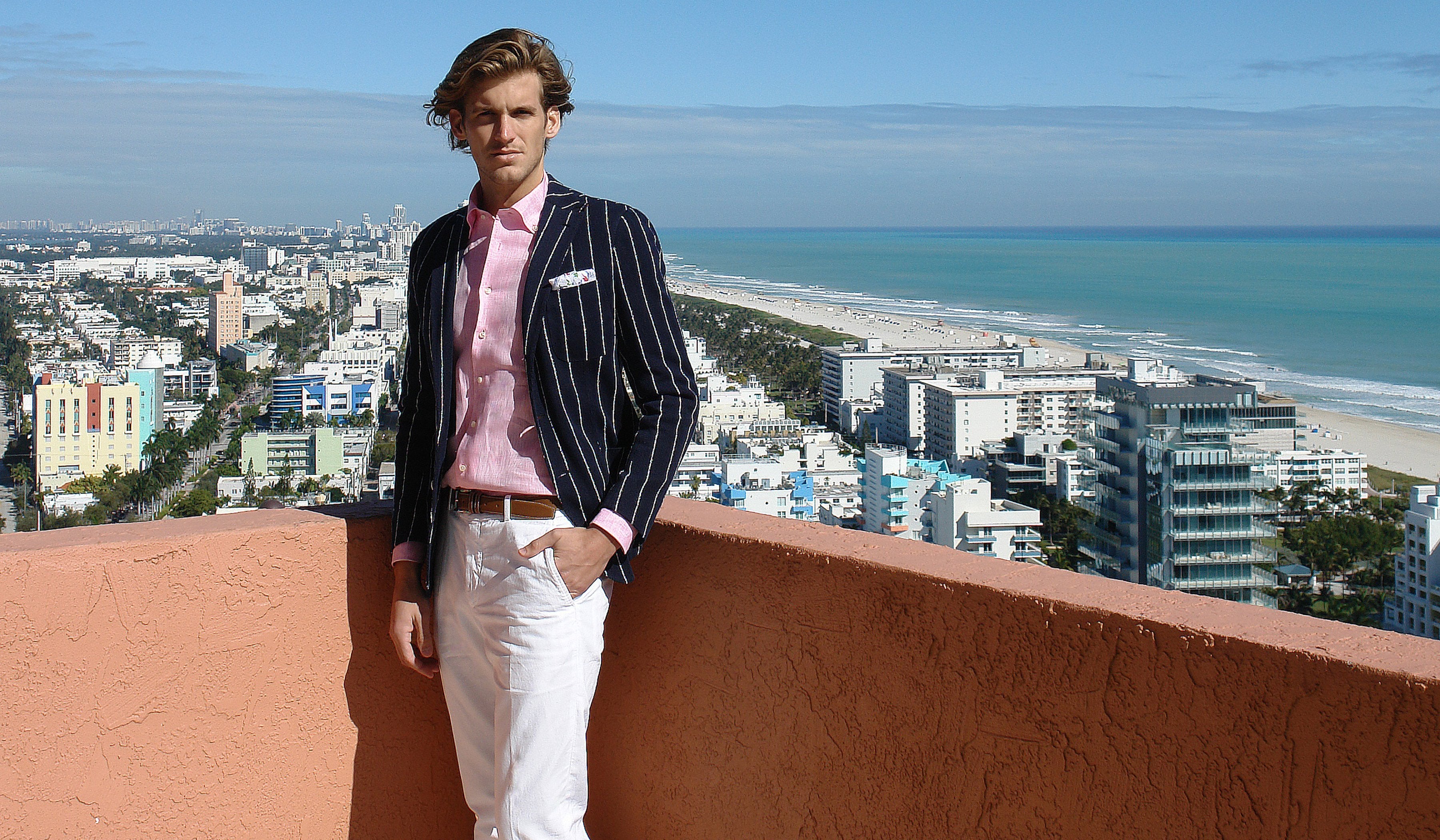
Material Matters: Linen
As synonymous with a warm weather wardrobe as perhaps any single material, linen is a mainstay of both our Tropzien heritage and our modern multi-season offerings. And though it is often perceived exclusively as a summer staple, linen is actually a quite versatile fiber and fabric, and thus a useful layer in multiple seasons, due to the very qualities that make it such an effective coolant under the heat of the summer sun.
The overarching property associated with linen is comfort. With natural wicking and ventilation properties, linen is at once soft and structurally sound, allowing air to flow freely through the open weave of the fibers as easily as wind blows the garment itself. This helps air move around the wearer's body, helping give the body's natural cooling process (sweat) the space to cool us off. It also dries more quickly than cotton, so it doesn't create a layer of sodden insulation that can actually make us hotter in hot temps and dangerously cold in colder ones.
In addition to the breathability, linen also possesses a unique ability to adjust to the unique contours of its wearer without losing its tensile strength. The reason is its fibers. The fibers of the flax plant from which it is derived are longer and stronger than cotton, which allows the weave to move and shift without impacting the integrity of the fibers themselves.
The result is a garment that, over time, takes on a glovelike fit, whether pants, a shirt, or especially a sportcoat/suit jacket. Even the addition of linen to a cotton blend fabric helps increase the comfort and fit factor substantially, helping linen garments quickly become fit favorites after only a couple of wears and washings.
The downsides of course, at the risk of overstating, are rather famously twofold: shrinking and wrinkling. For a casual, comfort fabric, linen does require a bit more careful attention than cotton. Linen is best cared for with a delicate wash, must not, under any circumstances be anything but line/air dried, and can take on a slight sheen if ironed without the right amount of care.
And, on a related note, the notorious tendency for this original performance fabric to wrinkle, often beyond rescue. While, in more casual settings, a devil-may-care touch of patina and panache, and certainly a means of creating channels of ventilation when deployed in sunnier situations, wrinkles are usually an uninvited, unwelcome guest, especially in dressier (say, summer weddings) settings.
But as with most natural fibers - the linen we employ is 100% Normandy grown, Italian woven linen from the finest flax on the continent - the crisp properties that make the weave of linen fabric so breathable and strong are the very same properties that cause it to hold a crease so doggedly, increasing the need for ironing, and the eventual likelihood of the dreaded aforementioned sheen (in the case of dyed garments).
But even the finest, most luxurious of linen, from which all of our garments are made, can actually provide comfort and value not only throughout the year, but for years with proper care and attention. Employ a linen button front shirt in the fall as a lightweight layer between your top and jacket, as an additional toggle as temperatures rise and fall throughout the day and into the evening. And as your go-to garment when the sun is shining its brightest.
For care:
- Always follow the most stringent wash instructions as possible, as immediately after wearing as you can. Generally speaking we wear linen in the heat, in which its ultra absorptive properties help take in quite a bit of perspiration, which, without getting graphic about the biology of sweat, is never good for any garment.
- Never put in a drier. Ever. Unless you are looking to render the item completely ruined and unwearable. Only air dry either on a hanger or valet (back of a chair works in a pinch), to help maintain shape integrity.
- Iron when still a bit damp; this will allow you to get the inevitable wrinkles out without having to use the highest heat setting, and also allows the linen to flatten while it still has a bit of give in the fiber from the dampness, thereby resulting in a more effective and natural appearance (crisp but without flat and smooth - allowing the natural kinks and subtle texture of the fibers to stand out.
- For warm weather travel, fold neatly, preferably in a dry cleaning bag, and unpack and hang upon arrival. Or just put it on and hit the poolside bar, and let the ambient heat there do the work for you. Who are we kidding?


